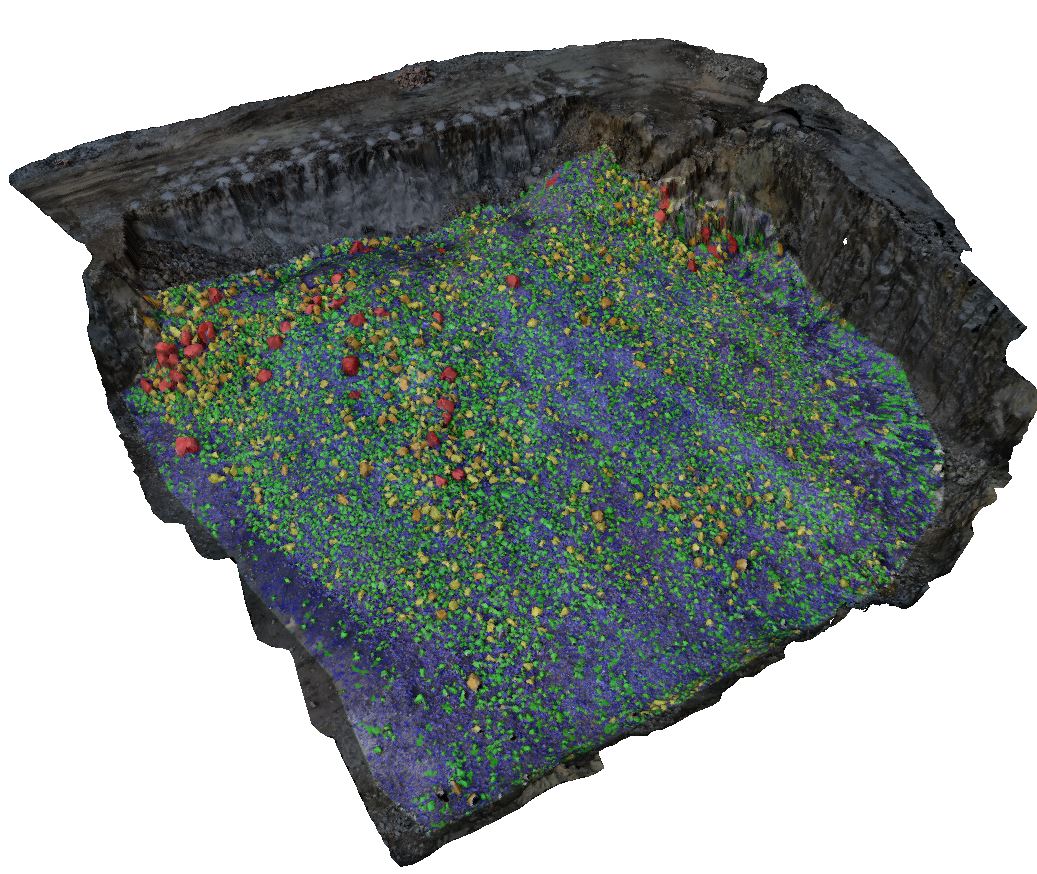
The Austrian company, which develops software to optimise blasting and reduce inherent environmental issues, says that BMX Fragmenter is a first-of-its-kind platform that automatically converts high resolution drone images into a highly accurate 3D rendition of the muckpile with colour-coded delineation of gradation.
BMX Fragmenter works as an independent module or can seamlessly integrate into 3GSM's BlastMetriX UAV blast design and analysis software.
The BMX Fragmenter system accepts overlapping high-resolution images taken by the operation’s standard drone. Using an interactive or preprogrammed flight plan, the flexible system leverages the drone’s GPS coordinates, so no ground reference markers are required. To save time and improve efficiency, the images remain local to the computer and do not require time-consuming uploading to the cloud.
3GSM says that BMX Fragmenter generates millions of 3D data points, reviewing an average rate of 200 photos per hour, for more complete statistical particle analysis. Setting it apart from other programmes, BMX Fragmenter automatically combines both 2D and 3D analysis for a more accurate and comprehensive evaluation of the muckpile surface.
“Delineation using only 2D analysis can lead to inaccurate measurements due to shadowing and the particle’s contour and structure,” comments Robert McClure, president of international blast engineering and consulting firm Robert A. McClure (RAM). “Adding the third dimension offers more accurate delineation through shape, and the 2D analysis is used for refinement and smaller particle detection.”
A 3D post-blast model is automatically generated showing the width, throw and height of the muckpile. Particle sizes are color-coded to give a quick gradation overview and for easy visualization of oversized material. The system comes standard with editing tools for analysis refinement. Quantitative charts generated provides distribution of particle size and percent passing through the screen. Users can also assign fragmentation models like Rosin-Rammler, Swebrec and Swebrec extended to the analysis.
Results can be exported and saved in PDF format. New BMX Fragmenter also generates comprehensive summary reports to be used for blast program optimization. In addition to open-pit mining operations, the new system can be used in debris flow, dam and underground applications.
“For continuous cyclic optimisation of a surface blasting programme, miners need a reproduceable blast design and objective analysis and quantification of the results,” adds McClure. “New BMX Fragmenter offers simple, fast and incredibly accurate analysis of the post-blast muckpile gradation, critical for a mine’s KPI programme.”














